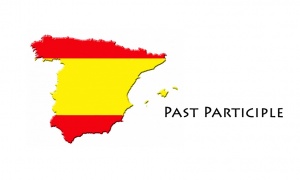Language/Spanish/Grammar/Past-Participle
Jump to navigation
Jump to search
Rate this lesson:
In Spanish, Past Participle is used in present, past and future perfect and some cases with the verb to be. As you know, verbs in spanish are divided in verbs that end in ar, er and ir and each type of verb has their rules to be formed.
Regular Verbs
When you want to form Past Participle with a regular verb, you need to erase ar, er or ir and put the corresponding ending. The next table shows you the endings for each type of verb.
| Verb | Verbo | Ending | Participio | Participle |
|---|---|---|---|---|
| To escape | Escapar | ado | Escapado | Escaped |
| To walk | Caminar | ado | Caminado | Walked |
| To lose | Perder | ido | Perdido | Lost |
| To obtain | Obtener | ido | Obtenido | Obtained |
| To run away | Huir | ido | Huido | Run Away |
| To add | Añadir | ido | Añadido | Added |
Irregular Verbs
Irregular Verbs change their base form completely and they are some verbs that end in er and ir (they generally end in o), the next table show you some examples.
| Verb | Verbo | Participio | Participle |
|---|---|---|---|
| To do/make | Hacer | Hecho | Done |
| To put | Poner | Puesto | Put |
| To open | Abrir | Abierto | Open |
| To say/tell | Decir | Dicho | Said |

